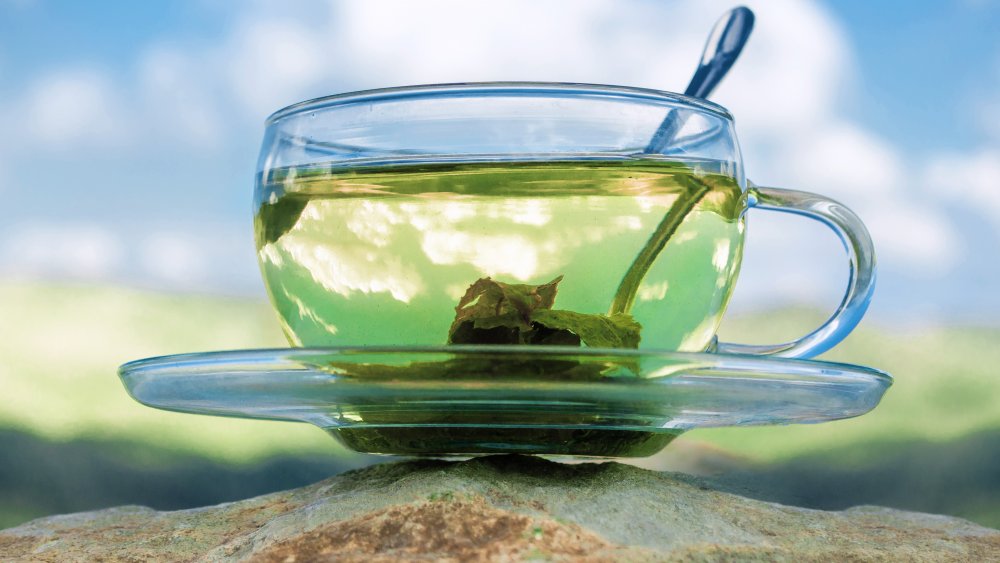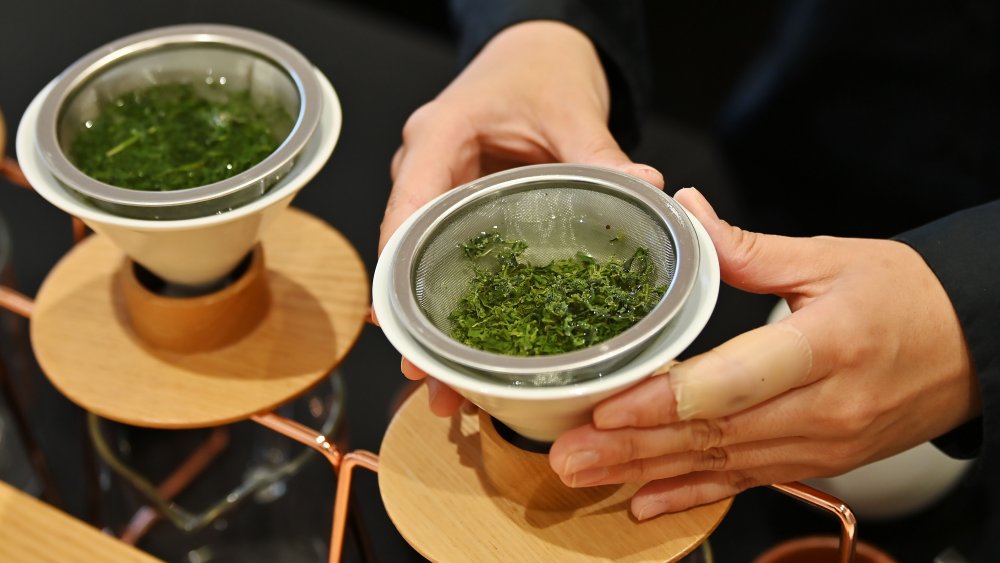The Real Reason You Should Never Use Boiling Water For Green Tea
We may receive a commission on purchases made from links.
While teas as dissimilar as English Breakfast and genmaicha come from the same plant, the Camellia sinensis, the method of preparation is actually quite different. Black teas such as English Breakfast and Earl Grey should be brewed with boiling (or nearly boiling) water between 208 and 212 degrees (via Extra Crispy), but green tea should be brewed with water ranging from 158 degrees Fahrenheit to 185 degrees Fahrenheit (via The Tea Curator).
Using boiling water to make green tea will result in a burned cup of green tea that lacks the subtle tastes and aromas a properly brewed cup of tea will contain (via Boulder Tea Company). It can also result in a bitter-tasting brew, especially if you couple water temperature that is too high with tea leaves left to brew too long in the water. If you've ever thought that you don't like the taste of green tea, finding it a bit astringent, it may just be because you're making it wrong.
How to ensure a proper temperature for brewing green tea
While some water heaters have settings to bring the liquid to an exact temperature (via Amazon), it's not the end of the world if you don't have one of these glorified kettles. Instead, you can just add a splash of cold water to the water you've boiled or you can remove the lid off your electric kettle and allow the water to cool for a few minutes. Green tea is delicate, in part because of how it is prepared. It's the least processed of all teas except for white tea.
Unlike black tea, the leaves are not oxidized, which means that the antioxidant and nutrient makeup of the tea is altered when the leaves are pressed (via The Tea Curator). To prevent this process from happening, great tea is first dried, and then lightly heated to prevent oxidation. The heating process is carried out in different ways depending on where the tea is made. Japanese tea (sencha, genmaicha, etc.) is heated by steaming, whereas Chinese green tea is heated on a hot surface such as a pan or a vat.

